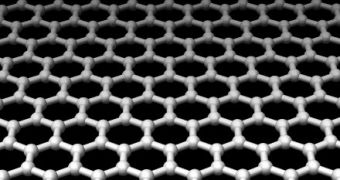Scientists at the Massachusetts Institute of Technology have managed to devise a new way of using the carbon-compound graphene for creating a new class of high-performance materials, to be used for next-generation microchips. The speeds that will be achieved with the use of the new stuff will exceed by far those achieved by the silicon-based chips that are in use today. There are limitations that silicon cannot get past, but graphene is made entirely out of carbon atoms, so it can easily carry electricity, but without getting very warm, as copper, for example, does.
“In electronics, we're always trying to increase the frequency,” so as to make “faster and faster computers” and other machines. “It's very difficult to generate high frequencies above 4 or 5 gigahertz,” Microsystems Technology Laboratories core member Tomás Palacios, who is also an assistant professor in MIT's Department of Electrical Engineering and Computer Science, explains. He has collaborated with Jing Kong, an EECS assistant professor, and with students Han Wang and Daniel Nezich.
The results of their work are published in the May issue of the journal Electron Device Letters, but a summary of the work has been presented by Palacios last week at the American Physical Society meeting. “Researchers have been trying to find uses for this material since its discovery in 2004,” he says. “I believe this application will have tremendous implications in high-frequency communications and electronics,” the expert shares.
The new prototype device that the team has constructed is actually a frequency multiplier, a device used in electronics to boost the frequency that determines how many computations a chip can do per second. The experimental chip has been constructed entirely out of graphene, and the team notes that it has the ability of multiplying an electromagnetic signal two times. Another success is that the new chip does so without requiring filters, which in existing devices need a lot of energy to operate, in order to clear the signal.
“In physics today, graphene is, arguably, the most exciting topic. Graphene will play a key role in [the] future of electronics. We just need to identify the right devices to take full advantage of its outstanding properties. Frequency multipliers could be one of these devices,” the MIT expert concludes.

 14 DAY TRIAL //
14 DAY TRIAL //